 |
King of Chemicals Manufacturers |
Specifications, Properties, Uses, SDS of Refined Soybean Oil and Hydrogenated Soybean Oil or Soya Wax or Hydrogenated Soya Oil USP NF BP Ph Eur EP IP JP FCC Food Grade Manufacturer Supplier Exporter Wholesale & Small Packs, CAS Number 8001-22-7 or CAS Number 8016-70-4. |
|
| King of Chemicals has several associated companies having accreditations like cGMP, GLP - FDA Approved Good Manufacturing Practice and Good Laboratory Practice of WHO standard, ISO-9001, ISO-14001, ISO/IEC 17025, ISO ISO-45000, HACCP, FSSC 220000, FSSAI, "REACH" Registered, Kosher & Halal Certified. e-CTD and DMF support can be made available if needed. We offer USP NF BP Ph Eur EP IP JP Analytical Reagent FCC Food Grade Chemicals & Nutraceuticals. | |
        |
|
Muby Chem Pvt. Ltd. is a several decades old group of companies, engaged in manufacturing, supplying, distributing, wholesale supplies of Refined Soybean Oil and Hydrogenated Soybean Oil or Soya Wax USP NF BP Ph Eur EP IP JP FCC Food Grade for actual users, including retail or small pack supplies for research and development work.
We supply fine and speciality chemicals, pharmaceutical excipients, mineral fortifiers in chemically pure, analytical reagent grade, IP BP USP Ph Eur EP JP and other pharmaceutical grade monograph including FCC Food grade chemicals and Nutraceuticals at best prices. We and/or our associated units have all the facilities to supply as per cGMP standard observing good manufacturing practice and good laboratory practice. We can assure low microbial count and also offer a test certificate for the same. We maintain warehouses across USA, India, and UAE. Our group exports to USA, Canada, Mexico, Argentina, Brazil, Chile, Korea, Malaysia, Thailand, Indonesia, Europe, and several other parts of the world. We supply in wholesale container loads to small pack of few grams. Solid products may be specified for it size and shape as desired by the buyer.


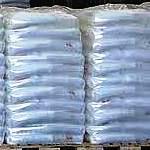
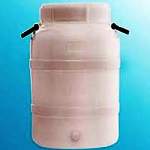
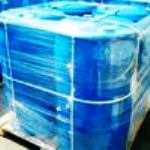
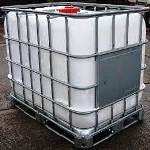
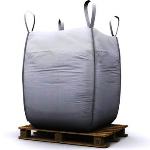
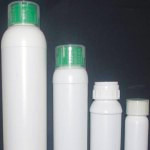
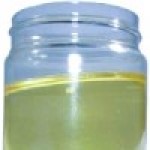
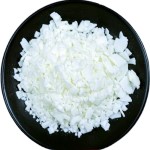
Refined Soybean Oil CAS Number 8001-22-7 and Hydrogenated Soybean Oil or Soya Wax 8016-70-4
For Properties Specifications Uses of Soybean Oil and Hydrogenated Soybean Oil or Soya Wax Click Properties, Specifications, Uses, Price, Process of Soybean Oil and Hydrogenated Soybean Oil or Soya Wax Manufacturer.
For For SDS MSDS Sheet of Soybean Oil and Hydrogenated Soybean Oil or Soya Wax Click SDS Safety Data Sheet MSDS Sheet of Soybean Oil and Hydrogenated Soybean Oil or Soya Wax Manufacturer.
The Properties, Specifications, Monograph and Uses of Soybean Oil and Hydrogenated Soybean Oil or Soya Wax:
Soybean Oil is the refined fixed oil obtained from the seeds of the soya plant Glycine max Merr. (Fabaceae). It may contain suitable antioxidants. Hydrogenated Soybean Oil is the product obtained by refining, bleaching, hydrogenation, and deodorization of oil obtained from seeds of the soya plant Glycine max Merr. (Fabaceae). The product consists mainly of triglycerides of palmitic and stearic acids.
Refined Soya Oil BP Ph Eur Grade Specifications
Refined Soyabean Oil
Refined Soya-bean Oil, Ph Eur monograph
Action and use: Excipient.
When Soya Oil, Soyabean Oil or Soya-bean Oil is demanded, Refined Soya Oil shall be supplied.
When intended for use in the manufacture of a parenteral dosage form, Refined Soya Oil complying with the requirement for Water below should be used.
DEFINITION
Fatty oil obtained from seeds of Glycine max (L.) Merr. (Glycine hispida (Moench) Maxim.) by extraction and subsequent refining. It may contain a suitable antioxidant.
CHARACTERS
Appearance: Clear, pale yellow liquid.
Solubility: Practically insoluble in ethanol (96 per cent), miscible with light petroleum (bp: 50-70C).
Relative density: About 0.922.
Refractive index: About 1.475.
IDENTIFICATION
Identification of fatty oils by thin-layer chromatography.
TESTS
Acid value: Maximum 0.5.
Peroxide value: Maximum 10.0, and maximum 5.0 if intended for use in the manufacture of parenteral preparations.
Unsaponifiable matter: Maximum 1.5 per cent, determined on 5.0 g.
Alkaline impurities: To pass the test.
Composition of the fatty-acid fraction of the oil:
saturated fatty acids of chain length less than C14: maximum 0.1 per cent;
myristic acid: maximum 0.2 per cent;
palmitic acid: 9.0 per cent to 13.0 per cent;
palmitoleic acid: maximum 0.3 per cent;
stearic acid: 2.5 per cent to 5.0 per cent;
oleic acid: 17.0 per cent to 30.0 per cent;
linoleic acid: 48.0 per cent to 58.0 per cent;
linolenic acid: 5.0 per cent to 11.0 per cent;
arachidic acid: maximum 1.0 per cent;
eicosenoic acid: maximum 1.0 per cent;
behenic acid: maximum 1.0 per cent.
Brassicasterol: Maximum 0.3 per cent in the sterol fraction of the oil.
Water: Maximum 0.1 per cent, determined on 1.00 g.
Hydrogenated Soya Oil BP Grade.
Soybean Oil USP NF Grade Specifications
Soybean Oil is the refined fixed oil obtained from the seeds of the soya plant Glycine max Merr. (Fabaceae). It may contain suitable antioxidants.
Specific gravity: between 0.916 and 0.922.
Refractive index: between 1.465 and 1.475.
Heavy metals: 0.001%.
Free fatty acids: The free fatty acids in 10 g require for neutralization not more than 2.5 mL of 0.020 N sodium hydroxide.
Fatty acid composition:
Palmitate 7 to 14%
Stearate1 to 6%
Oleate 19 to 30%
Linoleate 44 to 62%
Linolenate 4 to 11%
Iodine value: between 120 and 141.
Saponification: between 180 and 200.
Unsaponifiable matter: not more than 1.0%.
Cottonseed oil: Passes the test.
Peroxide: NMT 10.0 mEq per kg.
Specifications of Hydrogenated Soybean Oil USP NF Grade Specifications:
CAS 8016-70-4.
DEFINITION
Hydrogenated Soybean Oil is the product obtained by refining, bleaching, hydrogenation, and deodorization of oil obtained from seeds of the soya plant Glycine max Merr. (Fabaceae). The product consists mainly of triglycerides of palmitic and stearic acids.
IDENTIFICATION
A. It meets the requirements in Specific Tests for Fats and Fixed Oils, Fatty Acid Composition.
B. It meets the requirements in Specific Tests for Melting Range or Temperature, Class II.
Acceptance criteria: NMT 1 µg/g
Alkaline Impurities:
Sample: 2.0 g
Analysis: Dissolve the Sample by gently heating in a mixture of 1.5 mL of alcohol and 3.0 mL of methylbenzene. Add 0.05 mL of bromophenol blue and titrate with 0.01 N hydrochloric acid to a yellow endpoint.
Acceptance criteria: NMT 0.4 mL of 0.01 N hydrochloric acid is required.
Melting Range or Temperature: 66C to 72C.
Fats and Fixed Oils:
Sample: 10 g of Hydrogenated Soybean Oil.
Analysis: Dissolve the Sample in 50 mL of a hot mixture of neutralized alcohol and methylbenzene (1:1). Add 0.5 mL of PhPh TS, and immediately titrate, while still hot, with 0.1 N potassium hydroxide VS to produce a permanent, faint pink color.
Acceptance criteria: NMT 0.5
Fats and Fixed Oils: To meet the composition requirement.
Fats and Fixed Oils, Peroxide Value: NMT 5.0
Fats and Fixed Oils, Unsaponifiable Matter:
Sample: 5.0 g
Acceptance criteria: NMT 1.0%
Water Determination: NMT 0.3%
Packaging and Storage: Preserve in tight, light-resistant containers. No storage requirements are specified.
We also manufacture IP EP JP Grade of Soybean Oil Refined.
Hydrogenated Soybean Oil USP NF Grade Specifications
CAS 8016-70-4.
Hydrogenated Soybean Oil is the product obtained by refining, bleaching, hydrogenation, and deodorization of oil obtained from seeds of the soya plant Glycine max Merr. (Fabaceae). The product consists mainly of triglycerides of palmitic and stearic acids.
Packaging and storage: Preserve in tight, light-resistant containers. No storage requirements specified.
Identification:
A: It meets the requirements of the test for Fatty acid composition.
B: It meets the requirements of the test for Melting range.
Melting range: between 66 and 72 .
Acid value: Dissolve about 10 g of Hydrogenated Soybean Oil, accurately weighed, in 50 mL of a hot mixture of neutralized alcohol and methylbenzene-C7H8 (1:1), add 0.5 mL of PhPh, and immediately titrate, while still hot, with 0.1 N potassium hydroxide to produce a permanent, faint pink color: the acid value so obtained is not more than 0.5.
Peroxide value: not more than 5.0.
Unsaponifiable matter: not more than 1.0%, determined on 5.0 g.
Fatty acid composition: Hydrogenated Soybean Oil exhibits the following composition profile of fatty acids, as determined in the section Fatty Acid Composition.
| Carbon-Chain Length | No. of Double Bonds | Percentage (%) |
| <14 | 0 | 0.1 |
| 14 | 0 | 0.5 |
| 16 | 0 | 9–16 |
| 18 | 0 | 79–89 |
| 20 | 0 | 1.0 |
| 22 | 0 | 1.0 |
| 18 | 1 | 4.0 |
| 18 | 2 | 1.0 |
| 18 | 3 | 0.2 |
Alkaline impurities: Dissolve by gently heating 2.0 g of Hydrogenated Soybean Oil in a mixture of 1.5 mL of alcohol and 3.0 mL of Methylbenzene-C7H8. Add 0.05 mL of bromophenol blue, and titrate with 0.01 N hydrochloric acid to a yellow end-point: not more than 0.4 mL of 0.01 N hydrochloric acid is required.
Water: not more than 0.3%.
Limit of nickel: To pass the test 1 micro-gm per gm.
Hydrogenated Soyabean Oil BP Ph Eur Grade Specifications
Ph Eur
Action and use: Excipient.
DEFINITION
Product obtained by refining, bleaching, hydrogenation and deodorisation of oil obtained from seeds of Glycine max (L) Merr. (G. hispida (Moench) Maxim.). The product consists mainly of triglycerides of palmitic and stearic acids.
CHARACTERS
Appearance: White or almost white mass or powder which melts to a clear, pale yellow liquid when heated.
Solubility: Practically insoluble in water, freely soluble in methylene chloride, in light petroleum (bp: 65-70C) after heating and in Methylbenzene-C7H8, very slightly soluble in ethanol (96 per cent)
IDENTIFICATION
A. Melting point (see Tests).
B. Composition of fatty acids (see Tests).
TESTS
Melting point: 66C to 72C.
Acid value: Maximum 0.5.
Peroxide value: Maximum 5.0.
Unsaponifiable matter: Maximum 1.0 per cent, determined on 5.0 g.
Alkaline impurities: Dissolve 2.0 g with gentle heating in a mixture of 1.5 mL of ethanol (96 per cent) R and 3 mL of Methylbenzene-C7H8 R. Add 0.05 mL of a 0.4 g/L solution of bromophenol blue R in ethanol (96 per cent) R. Not more than 0.4 mL of 0.01 M hydrochloric acid is required to change the colour to yellow.
Composition of fatty acids:
Composition of the fatty-acid fraction of the oil:
saturated fatty acids of chain length less than C14: maximum 0.1 per cent
myristic acid: maximum 0.5 per cent
palmitic acid: 9.0 per cent to 16.0 per cent
stearic acid: 79.0 per cent to 89.0 per cent
oleic acid and isomers: maximum 4.0 per cent
linoleic acid and isomers: maximum 1.0 per cent
linolenic acid and isomers: maximum 0.2 per cent
arachidic acid: maximum 1.0 per cent
behenic acid: maximum 1.0 per cent.
Nickel: Maximum 1 ppm.
We also manufacture Hydrogenated Soybean Oil EP Grade.
The MSDS-SDS Hazard Statement of Soybean Oil:
Soybean Oil SDS, Safety Data Sheet
MSDS Sheet, Material Safety Data Sheet 10-Feb-25
1. PRODUCT AND COMPANY IDENTIFICATION
Product Name & Other Names: Soybean Oil or Soya oil from Glycine max or Soya Bean Oil.
CAS Number: 8001-22-7
EINECS EC Number: 232-274-4
Relevant uses and uses advised against (if any): Industrial use only.
Supplier: As per letterhead.
2. HAZARDS IDENTIFICATION
GHS, Globally Harmonized System Classification in accordance with 29 CFR 1910
Classification according to Regulation (EC) No 1272/2008
Not a hazardous substance or mixture according to Regulation (EC) No. 1272/2008.
This substance is not classified as dangerous according to Directive 67/548/EEC.
Labeling according to GHS & Regulation (EC) No 1272/2008
GHS Label Elements NONE |
Signal Word: None
Precautionary statements:
P261: Avoid breathing dust/fume/gas/mist/vapors/spray.
P262: Do not get in eyes, on skin, or on clothing.
P281: Use personal protective equipment as required.
P302+P352: IF ON SKIN: Wash with plenty of soap and water.
P304+P340: IF INHALED: Remove victim to fresh air and keep at rest in a position comfortable for breathing.
P305+P351+P338: IF IN EYES: Rinse cautiously with water for several minutes. Remove contact lenses, if present and easy to do. Continue rinsing.
P337+313: If eye irritation persists get medical advice/attention.
3. COMPOSITION / INFORMATION ON INGREDIENTS
Product Name & Other Names: Soybean Oil or Soya oil from Glycine max or Soya Bean Oil.
CAS Number: 8001-22-7
EINECS EC Number: 232-274-4
4. FIRST-AID MEASURES
Always seek medical attention after first aid measures are provided.
Eye Contact: Rinse immediately with plenty of water for 10 minutes at least. Contact a physician if symptoms persist.
Skin Contact: Wash thoroughly with soap and water; flush with plenty of water. Take off spoilt clothes. Contact physician if symptoms persist.
Ingestion: Wash the mouth with water; seek medical advice immediately.
Inhalation: Remove from exposure site to fresh air and keep at rest. Obtain medical advice.
5. FIRE-FIGHTING MEASURES
Extinguishing Media Recommended: Water spray, CO2, foam, dry chemicals.
Non-Recommended: Do not use direct water jet on burning material.
Extinguishing Procedures: Closed containers may build up pressure at elevated temperatures. If possible, containers should be cooled with a water spray.
Special Information: In the event of a fire, wear full protective clothing and NIOSH-approved self-contained breathing apparatus with full face piece operated in the pressure demand or other positive pressure mode.
6. ACCIDENTAL RELEASE MEASURES
Personal precautions, protective equipment, and emergency procedures: Avoid breathing dust/fumes/gas/mist/vapors/spray. Use individual protective equipment (waterproof boots, suitable protective clothing, safety glasses, etc.).
Environmental precautions: Do not let the product enter drains, soil, or water sources.
Methods and materials used for containment Cleanup procedures and Storage: Do not inhale dust, vapors, mist, or gas. Avoid dust formation. Contain spilled material. Cover with an inert, non-combustible absorbent material, (e.g. sand, earth, diatomaceous earth, vermiculite). Use a shovel to put the material into a convenient waste disposal container.
7. HANDLING AND STORAGE
Precautions for safe handling: Apply according to good manufacturing and industrial hygiene practices. Ensure proper ventilation. In case of insufficient ventilation, wear suitable respiratory equipment. Wash thoroughly after handling. Do not drink, eat, or smoke while handling. Avoid contact with skin, eyes, and clothing. Minimize dust generation. Avoid breathing dust/fumes/gas/mist/vapors/spray. Keep container tightly closed. Avoid ingestion and inhalation. Use individual protective equipment (waterproof boots, suitable protective clothing, safety glasses, etc.).
Conditions for safe storage, including any incompatibilities: Store in cool, dry, and ventilated area away from heat sources and protected from sunlight in tightly closed original container. Keep air contact to a minimum. Store protected from heat, sparks and ignition sources and incompatible materials. Avoid inhalation of dust/mist/vapor. Do not store with incompatible materials like strong oxidizing agents, strong acids, and alkalis. Keep away from ignition sources and naked flame.
8. EXPOSURE CONTROL
Components with workplace control parameters: Not Established
Ventilation System: A system of local and/or general exhaust is recommended to keep employee exposures as low as possible.
Personal Respirators (NIOSH Approved): For conditions of use where exposure to dust or mist is apparent and engineering controls are not feasible, a particulate respirator may be worn.
Skin Protection: Wear protective gloves and clean body-covering clothing.
Eye Protection: Use chemical safety goggles and/or full face shield where dusting or splashing of solutions is possible. Maintain eye wash fountain and quick-drench facilities in work area.
Other Control Measures: Maintain good housekeeping in work area. Handle in accordance with good industrial hygiene and safety practice.
9. PHYSICAL AND CHEMICAL PROPERTIES
Appearance: Clear light yellow liquid.
Odor: Characteristic.
Odor threshold: No information found.
pH: No information found.
Relative density: 0.91 to 0.93
Melting point/freezing point: No information found.
Initial boiling point and boiling range: No information found.
Flash point: >113C.
Auto-ignition temperature: No information found.
Decomposition temperature: No information found.
Upper/lower flammability or explosive limits: No information found.
Vapor pressure: No information found.
Vapor density: No information found.
Evaporation rate: No information found.
Flammability (solid, gas): No information found.
Partition coefficient: n-octanol/water: No information found.
Solubility(ies): No information found.
Viscosity: No information found.
10. STABILITY AND REACTIVITY
Reactivity: It presents no significant reactivity hazards, by itself or in contact with water. Avoid contact with strong acids, alkalis, or oxidizing agents. Avoid high temperatures and flames.
Hazardous Polymerization: Will not occur.
Decomposition: Carbon monoxide and unidentified organic compounds may be formed during combustion.
11. TOXICOLOGICAL INFORMATION
Toxicity to Animals: No information found.
Carcinogenicity: No component of this product present at levels greater than or equal to 0.1% is identified as possible or confirmed human carcinogen by IARC, ACGIH, OSHA and NTP.
Teratogenic Effects: No information found.
Mutagenic Effects: No information found.
Developmental Toxicity: No information found.
Reproductive Effects: No information found.
12. ECOLOGICAL INFORMATION
Toxicity to fish: No information found.
Persistence and Degradability: No information found.
Mobility: No information found.
Bioaccumulation/ Accumulation: Biodegradable.
Results of PBT and vPvB assessment: No information found for assessment.
13. DISPOSAL CONSIDERATIONS
In accordance with local environmental laws. Avoid disposing into drainage systems and into the environment.
14. TRANSPORT REGULATIONS
DOT USA, TDG Canada & ADR/RID Europe: Not dangerous goods.
IMDG/IMO: Not dangerous goods.
IATA/ICAO: Not dangerous goods.
15. REGULATORY INFORMATION
USA:
SARA 311/312 Hazardous chemical: No SARA hazards.
California Prop. 65 Components: Not listed.
Disclaimer:
**************************
Our company provides this MSDS sheet in good faith but makes no representation as to its comprehensiveness or accuracy. This SDS sheet is intended only as a guide to the appropriate precautionary handling of the material by a properly trained person using this product. The above information has been compiled from various sources and has the possibility of discrepancy and being out-dated information. Individuals receiving the information must exercise their independent judgment and do further search in determining its appropriateness for a particular purpose. In no case shall our company be liable to loss or damages by the product user.
**************************
The MSDS-SDS Hazard Statement of Hydrogenated Soybean Oil or Soya Wax:
Hydrogenated Soybean Oil Flakes SDS, Safety Data Sheet
MSDS Sheet, Material Safety Data Sheet 10-Feb-25
Section 1: Chemical Product and Company Identification
Product Name & Other Names: Hydrogenated Soybean Oil Flakes or Soya Wax.
CAS Number: 8016-70-4
EINECS EC Code: 269-820-6
Relevant uses and uses advised against (if any): Industrial Manufacturing
Supplier: As per letterhead.
Section 2: Hazards Identification
GHS, Globally Harmonized System Classification in accordance with 29 CFR 1910
Classification according to Regulation (EC) No 1272/2008
Not a hazardous substance or mixture according to Regulation (EC) No. 1272/2008.
This substance is not classified as dangerous according to Directive 67/548/EEC.
Labeling according to GHS & Regulation (EC) No 1272/2008
GHS Label Elements NONE |
Signal Word: None
Precautionary statements:
P261: Avoid breathing dust/fume/gas/mist/vapors/spray.
P262: Do not get in eyes, on skin, or on clothing.
P281: Use personal protective equipment as required.
P302+P352: IF ON SKIN: Wash with plenty of soap and water.
P304+P340: IF INHALED: Remove victim to fresh air and keep at rest in a position comfortable for breathing.
P305+P351+P338: IF IN EYES: Rinse cautiously with water for several minutes. Remove contact lenses, if present and easy to do. Continue rinsing.
P337+313: If eye irritation persists get medical advice/attention.
Section 3: Composition and Information on Ingredients
Product Name & Other Names: Hydrogenated Soybean Oil Flakes or Soya Wax.
CAS Number: 8016-70-4
EINECS EC Code: 269-820-6
Section 4: First Aid Measures
Always seek medical advice after the first aid treatment.
Skin: Rinse with water. Soap may be used. Seek Medical Aid.
Eyes: Wash eyes with plenty of water for at least 15 minutes, lifting lids occasionally. Seek Medical Aid.
Inhalation: Remove to fresh air. If not breathing, give artificial respiration. If breathing is difficult, give oxygen.
Ingestion: If swallowed, induce vomiting immediately after giving two glasses of water. Never give anything by mouth to an unconscious person.
Section 5: Fire and Explosion Data
Flammability of the Product: Combustible.
Products of Combustion: Fumes and Oxides of carbon.
Fire Fighting Media and Instructions: Use water spray, alcohol-resistant foam, dry chemical, or carbon dioxide. Water and sand may also be used. Avoid solid water jet.
Special Information: In the event of a fire, wear full protective clothing and NIOSH-approved self-contained breathing apparatus with full face piece operated in the pressure demand or other positive pressure mode.
Section 6: Accidental Release Measures
Personal precautions, protective equipment, and emergency procedures: Ventilate area of leak or spill. Avoid breathing dust/fumes/gas/mist/vapors/spray. Use individual protective equipment (waterproof boots, suitable protective clothing, safety glasses, etc.).
Environmental precautions: Do not let the product enter drains, soil, or water sources.
Methods and materials used for containment Cleanup procedures and Storage:
Small Spill: Use appropriate tools to put the spilled solid in a convenient waste disposal container.
Large Spill: Do not inhale vapors, mist, or gas. Avoid dust formation. Contain spilled material. Cover with an inert, non-combustible absorbent material, (e.g. sand, earth, diatomaceous earth, vermiculite). Vacuum or sweep-up and remove to an approved disposal container.
Section 7: Handling and Storage
Precautions for safe handling: This material may burn but will not ignite readily. Keep all sources of ignition away from spill/release. Apply according to good manufacturing and industrial hygiene practices. Ensure proper ventilation. In case of insufficient ventilation, wear suitable respiratory equipment. Wash thoroughly after handling. Do not drink, eat, or smoke while handling. Avoid contact with skin, eyes, and clothing. Minimize dust generation. Avoid breathing dust/fumes/gas/mist/vapors/spray.Keep container tightly closed. Avoid ingestion and inhalation. Use individual protective equipment (waterproof boots, suitable protective clothing, safety glasses, etc.).
Conditions for safe storage, including any incompatibilities: Store in cool, dry, and ventilated area away from heat sources and protected from sunlight in tightly closed original container. Keep air contact to a minimum. Store protected from heat, sparks and ignition sources and incompatible materials. Avoid contact with skin and eyes. Avoid inhalation of dust/mist/vapor. Do not store with incompatible materials like strong oxidizing agents and acids.
Section 8: Exposure Controls/Personal Protection
Engineering Controls: Use process enclosures, local exhaust ventilation, or other engineering controls to keep airborne levels low.
Ventilation System: A system of local and/or general exhaust is recommended to keep employee exposures as low as possible.
Personal Respirators (NIOSH Approved): For conditions of use where exposure to dust or mist is apparent and engineering controls are not feasible, a particulate respirator may be worn.
Skin Protection: Wear protective gloves and clean body-covering clothing.
Eye Protection: Use chemical safety goggles and/or full face shield where dusting or splashing of solutions is possible. Maintain eye wash fountain and quick-drench facilities in work area.
Other Control Measures: Maintain good housekeeping in work area. Handle in accordance with good industrial hygiene and safety practice.
Section 9: Physical and Chemical Properties
Appearance: Solid white to off-white powder, flakes or granules.
Odor: Odorless.
Odor threshold: No information found.
pH: No information found.
Relative density: around 0.9
Melting Point: 65-70C.
Initial boiling point and boiling range: No information found.
Flash point: No information found.
Auto-ignition temperature: No information found.
Decomposition temperature: No information found.
Upper/lower flammability or explosive limits: No information found.
Vapor pressure: No information found.
Vapor density: No information found.
Evaporation rate: No information found.
Flammability (solid, gas): No information found.
Partition coefficient: n-octanol/water: No information found.
Solubility: Negligible solubility in water.
Viscosity: No information found.
Section 10: Stability and Reactivity Data
Stability: It is stable.
Conditions of instability: Incompatible materials
Incompatibility with various substances: Heat, light, strong oxidizing agents.
Polymerization: Will not occur.
Section 11: Toxicological Information
Toxicity to Animals:No information found.
Carcinogenicity: No component of this product present at levels greater than or equal to 0.1% is identified as possible or confirmed human carcinogen by IARC, ACGIH, OSHA and NTP.
Mutagenic Effects: No information found.
Teratogenic Effects: No information found.
Developmental Toxicity: No information found.
Reproductive Effects: No information found.
Section 12: Ecological Information
Ecotoxicity: The product is not considered harmful to aquatic organisms or to cause long-term adverse effects in the environment. Not dangerous for the ozone layer.
Persistence and Degradability: No information found.
Mobility: No information found.
Bioaccumulation/ Accumulation: No information found.
Results of PBT and vPvB assessment: No information found.
Section 13: Disposal Considerations
Waste Disposal: Waste must be disposed of in accordance with federal, state, and local environmental control regulations.
Section 14: Transport Information
DOT USA, TDG Canada & ADR/RID Europe: Not regulated.
IMDG: Not regulated.
IATA: Not regulated.
Section 15: Other Regulatory Information
USA Federal and State Regulations:
SARA 311/312 Hazards: No SARA Hazards
California Prop. 65 Components: Not listed.
Disclaimer:
**************************
Our company provides this MSDS sheet in good faith but makes no representation as to its comprehensiveness or accuracy. This SDS sheet is intended only as a guide to the appropriate precautionary handling of the material by a properly trained person using this product. The above information has been compiled from various sources and has the possibility of discrepancy and being out-dated information. Individuals receiving the information must exercise their independent judgment and do further search in determining its appropriateness for a particular purpose. In no case shall our company be liable to loss or damages by the product user.
**************************

Soybean Oil and Hydrogenated Soybean Oil or Soya Wax Manufacturers, Suppliers, Exporters, Wholesalers:
King of Chemicals manufacturers

Plot No. 2900/46&47 + 2900/163to167, GIDC, Ankleshwar, Dist. Bharuch, India
India, USA, UAE
TEL: (Office) 91-22-23774610, 91-22-23723564
e-mail: info@kingofchemicals.com
Copyright and Usual Disclaimer is Applicable --- April 6, 2025
If I give you “My Word” Nobody can undo it.
If I sign an “Agreement” my Lawyer will undo it
Our products are for industrial and laboratory use only. The user must test the material before use. We are not dispensing chemists or druggist and do not offer over the counter type (OTC) products for medical use by individuals.
We and our associates manufacture pure chemicals surpassing Monograph Specifications of Analytical Reagent Standards, British & European Pharmacopoeia BP Ph Eur EP Standard, US Pharmacopoeia USP NF Standard, Indian Pharmacopoeia IP Standard, Japan Pharmacopoeia JP Standard, FCC Food Grade Standard. |
|